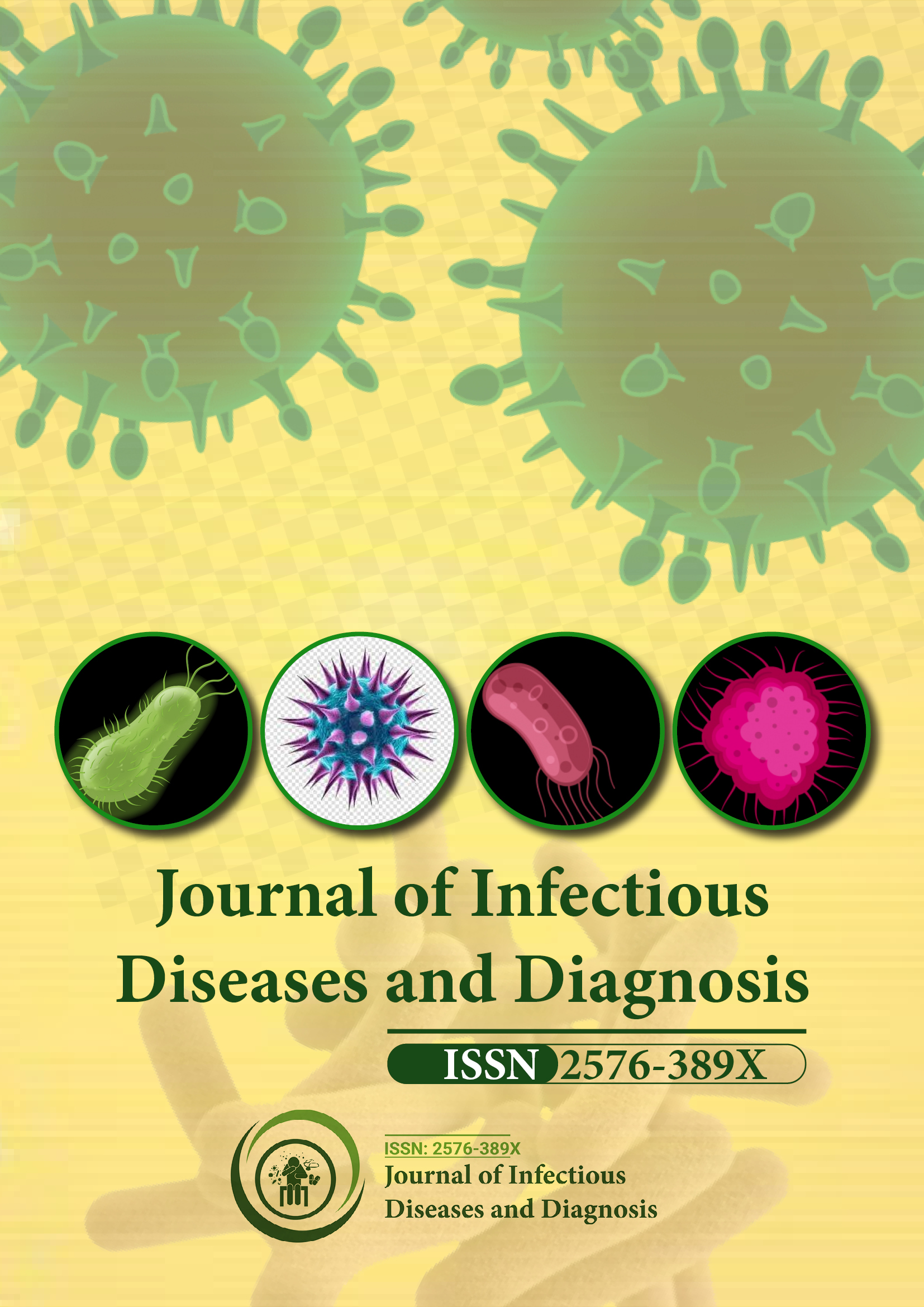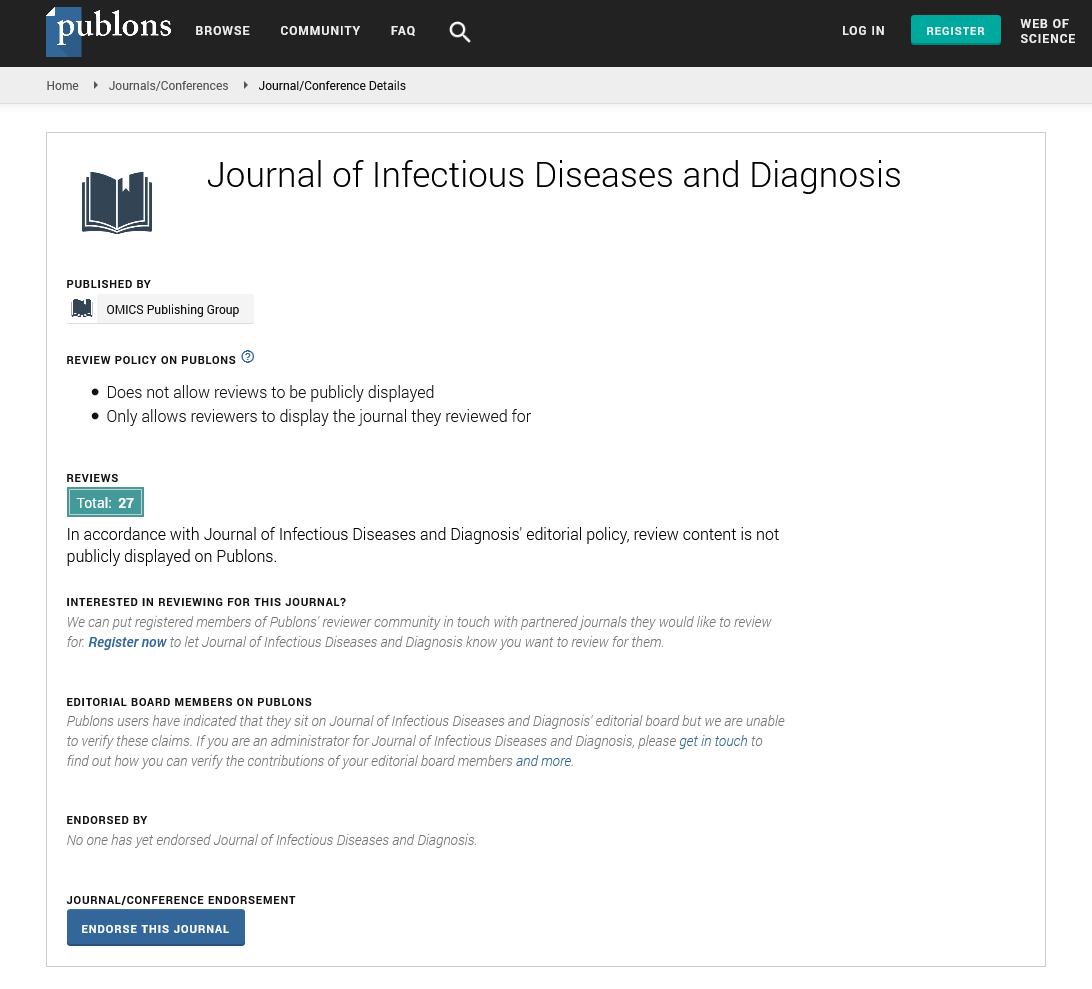Indexed In
- RefSeek
- Hamdard University
- EBSCO A-Z
- Publons
- Euro Pub
- Google Scholar
Useful Links
Share This Page
Journal Flyer

Open Access Journals
- Agri and Aquaculture
- Biochemistry
- Bioinformatics & Systems Biology
- Business & Management
- Chemistry
- Clinical Sciences
- Engineering
- Food & Nutrition
- General Science
- Genetics & Molecular Biology
- Immunology & Microbiology
- Medical Sciences
- Neuroscience & Psychology
- Nursing & Health Care
- Pharmaceutical Sciences
Commentary - (2024) Volume 9, Issue 3
Safety and Efficacy of Vaginal Microbicides in HIV Prevention
Amelie Merritt*Received: 01-May-2024, Manuscript No. JIDD-24-26000; Editor assigned: 03-May-2024, Pre QC No. JIDD-24-26000 (PQ); Reviewed: 20-May-2024, QC No. JIDD-24-26000; Revised: 27-May-2024, Manuscript No. JIDD-24-26000 (R); Published: 03-Jun-2024, DOI: 10.35248/2576-389X.24.09.277
Description
The fight against HIV has seen numerous strategies aimed at preventing transmission, with the development of vaginal microbicides emerging as a significant approach. Vaginal microbicides are substances designed to reduce or prevent the sexual transmission of HIV when applied inside the vagina. This approach is particularly significant for empowering women, who often have less control over the use of conventional preventive measures. The development of these microbicides involves a multifaceted process, addressing biological, chemical, and socio-behavioral challenges.
The initial concept behind vaginal microbicides was straightforward creating a product that can be applied topically to inhibit HIV transmission. Early formulations included nonspecific agents like nonoxynol-9, which has shown potential in laboratory settings but were ultimately found to increase HIV risk in real-world applications due to inflammation and disruption of the vaginal mucosa. This setback underscored the complexity of developing safe and effective microbicides, necessitating a deeper understanding of both HIV transmission dynamics and vaginal physiology.
Subsequent efforts have focused on more complicated approaches, targeting specific stages of the HIV life cycle. Antiretroviral drugs, already proven effective in systemic treatments for HIV, have been incorporated into microbicide formulations. For instance, tenofovir, a nucleotide reverse transcriptase inhibitor, has been developed into a gel form. Clinical trials, such as the CAPRISA 004 study, demonstrated that tenofovir gel could reduce HIV acquisition by up to 39% when used consistently. This result was a milestone, proving that antiretroviral-based microbicides could be both effective and safe.
Further innovations have seen the development of combination microbicides, which incorporate multiple active ingredients to target HIV at different stages or to provide broader protection against other Sexually Transmitted Infections (STIs). This multipronged approach aims to enhance efficacy and address the reality that users may not always apply microbicides perfectly. Combining agents that prevent HIV entry, replication, and integration could theoretically offer robust protection even with inconsistent use.
The delivery mechanisms for vaginal microbicides are also critical to their success. Gels, films, and Intravaginal Rings (IVRs) each have their advantages and challenges. Gels are userfriendly and can provide immediate protection, but they require consistent application. IVRs, which can release drugs over extended periods, offer a more convenient option, potentially improving adherence. The ASPIRE trial and the ring study have both shown that IVRs containing dapivirine can reduce HIV infection rates significantly, with the added benefit of long-term, sustained drug release.
Socio-behavioral factors are paramount in the development and deployment of vaginal microbicides. Acceptability, cultural attitudes, and gender dynamics all influence the uptake and consistent use of these products. Engaging with communities to understand their preferences and concerns is essential. Educational campaigns and supportive healthcare environments can enhance acceptance and adherence, ensuring that microbicides are not only scientifically sound but also practically effective in real-world settings.
Despite the progress, challenges remain. The variability in trial outcomes highlights the need for ongoing research to optimize formulations and delivery methods. Moreover, ensuring that microbicides are affordable and accessible, especially in lowresource settings where HIV prevalence is highest, is crucial. Partnerships between governments, non-profits, and private sectors can facilitate this, ensuring that advancements in microbicide technology translate into real-world impact.
The future of vaginal microbicides looks promising, with several products in the pipeline and ongoing research exploring novel compounds and combinations. Innovations in nanotechnology and drug delivery systems may further enhance the efficacy and user experience of microbicides. Additionally, integrating microbicide research with broader HIV prevention strategies, including Pre-Exposure Prophylaxis (PrEP) and vaccination efforts could provide a comprehensive approach to reducing HIV transmission.
Conclusion
In conclusion, the development of vaginal microbicides represents a significant advancement in the fight against HIV, offering a preventive measure that empowers women and addresses specific challenges in HIV transmission dynamics. Continued research, community engagement, and strategic partnerships will be essential to overcoming remaining hurdles and ensuring that these products fulfill their potential in reducing the global burden of HIV. The journey from concept to clinical application underscores the complexity and necessity of multidisciplinary approaches in developing effective public health interventions.
Citation: Merritt A (2024) Safety and Efficacy of Vaginal Microbicides in HIV Prevention. J Infect Dis Diagn. 9:277.
Copyright: © 2024 Merritt A. This is an open-access article distributed under the terms of the Creative Commons Attribution License, which permits unrestricted use, distribution, and reproduction in any medium, provided the original author and source are credited.

